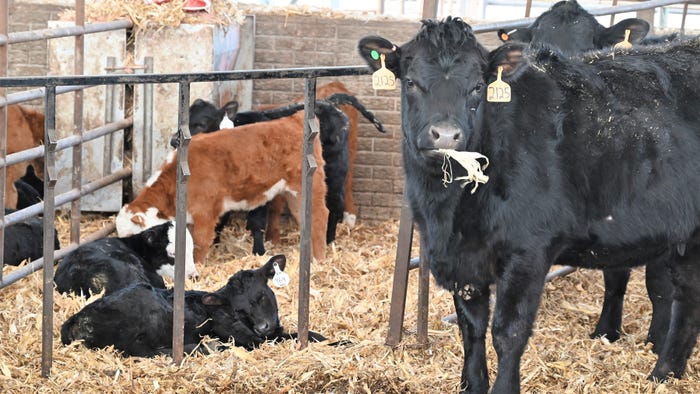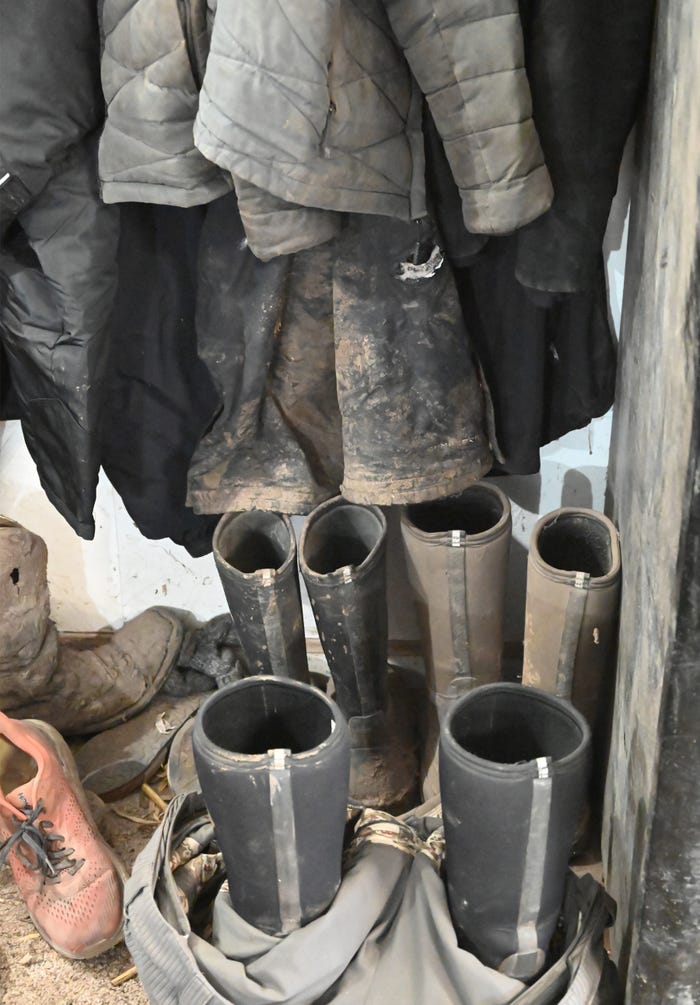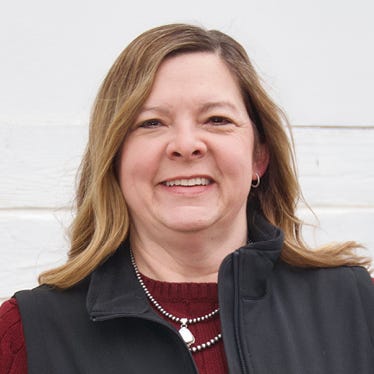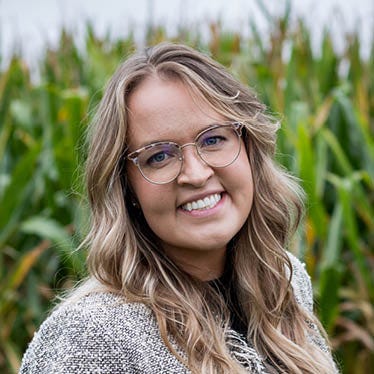Better beef biosecurity needed
Having a biosecurity plan is common in the hog and poultry industries, but beef producers have been the last in the agriculture industry to implement a good plan. Read why having a developed biosecurity plan is important.

A good on-farm biosecurity plan is the best way to prevent the introduction of outside diseases that could cause devastation to a herd. The problem is, the U.S. beef industry doesn’t have a good plan like the hog, chicken and turkey industries do.
“We realize we are not the norm with having a biosecurity plan, but with how we operate with cattle in a confinement situation, we think it’s extremely important,” says Chad Wilkerson, a cattle producer in Linden, Iowa. He and his family run Wilkerson Farms, which specializes in raising embryo calves for clients across the nation.
His background in the hog industry and building and running confinement sites led to the development of their embryo business, where cows are calved out and calves are raised in hoop buildings. “We had the idea but didn’t have the pasture to run the cows. This led to the thought of running our cows like a sow operation, and we knew biosecurity had to be a part of that,” Wilkerson says.

CLEANLINESS IS KEY: Keeping cattle in clean, freshly bedded pens is another factor in the biosecurity plan at Wilkerson Farms. Calves also have a small creep-feeding area where they often relax, and that’s also supplied with clean bedding.
At Wilkerson Farms, the biosecurity plan starts with a good relationship with the herd veterinarians, of which two are on site each week to walk through the cows and calves, review treatment protocols and discuss any issues which may arise. This, along with several employees walking through the herd daily, helps catch health problems which may show up. Being flexible to make changes in herd health as well as nutrition is important.
Biosecurity plan
Julia Herman, beef cattle specialist veterinarian for the National Cattlemen’s Beef Association, says biosecurity is not only what comes on and off your farm, but it’s also how you’re handling those animals on the farm. “It’s all about preventive measures to ensure cattle are as strong as they can be if a disease comes onto your ranch that you can’t control,” she says.
Herman recommends the following for successful farm and ranch biosecurity, which are consistent themes within the Beef Quality Assurance (BQA) program:
cleaning and disinfecting facilities and equipment
maintaining a solid vaccination program
providing a good nutrition plan
handling animals in a low-stress manner
implementing a quarantine period for new animals
investing in a training protocol for farm and ranch employees
monitoring what people and animals have been on the property
When setting up a biosecurity plan, Wilkerson says to keep it simple — and look at the big picture to keep your herd and facility clean and disease-free. Cleanliness is important at the Wilkerson facilities. Pens are cleaned and bedded daily. The office is also cleaned regularly. It is a high traffic area for employees and serves as a spot for warming calves on a cold day. Employees have footwear and outerwear that stays at the facility. They change when they arrive to work and again when they leave. Visitors to the facilities must check in at the office and wear plastic boots over their footwear for prevention.
“I don’t expect we will ever get to the shower-in, shower-out like at many hog facilities, but we will continue to do as much as we can to keep any outside problems from entering,” Wilkerson says.
New cows to the Wilkerson facilities are quarantined at a gestation facility before they are allowed into the herd. Blood samples are taken on all new animals within 24 hours and screened for diseases through the Veterinary Diagnostic Lab at Iowa State University. If a cow shows a problem, she is not retained.
“Biosecurity can be as intense as you want it to be,” Herman says. “Producers have the most control over their biosecurity by being proactive and having a plan in place before there is an outbreak.”
NCBA’s producer team has developed the BQA Daily Biosecurity Plan for Disease Prevention to aid producers in biosecurity planning on their farms and ranches.
“Steps to protect against diseases like bovine respiratory disease, Johne’s disease or leptospirosis, can apply to foot-and-mouth disease,” Herman says. “The BQA plan is a building block to being prepared for a foreign animal disease outbreak like foot-and-mouth disease.”
Wilkerson says the beef industry does need to realize the importance of biosecurity in preventing disease, or the industry will be forced to deal with it if a foreign animal disease outbreak were to occur. This includes the registration of premise identification numbers to help trace any problems if or when they happen.
International experience
In February 2020, Herman flew to Uganda with a group of animal health experts to study foot-and-mouth disease as part of an educational goal towards teaching biosecurity within the U.S. cattle industry. Uganda is an endemic country, where foot-and-mouth disease outbreaks regularly occur in livestock and wildlife.
“It was eye-opening to think about out how the United States livestock industry would respond, since we haven’t seen a foot-and-mouth disease outbreak since 1929,” she says. “Besides the obvious animal health and welfare issues, there will be some pretty extensive trade and transport challenges that come with an outbreak.”
Herman studied two active outbreaks in Uganda. Ugandan farmers couldn’t sell or transport their animals for the duration of the outbreaks, which in some cases lasted several months. This harsh reality is one that the U.S. may have to face if foot-and-mouth disease reaches our country.
During that time, she learned how to trace infections, identify clinical signs and study the impact the outbreaks had on farmers’ livelihoods. Herman says the U.S. herd is naïve, and foot-and-mouth disease would cause an extreme disruption in our everyday activities. A foreign animal disease outbreak would bring a complete standstill for 72 hours to susceptible species to trace the source and get a response plan set up.
“We want everybody — within the agricultural industry and those who benefit from it — to be on the same page, so if a foreign animal disease outbreak does happen to the livestock industry, we can work together to eradicate the disease, protect our animals and get the industry back on its feet,” she says.

CHANGE OF CLOTHING: Footwear and outerwear is changed as employees come and go to work at Wilkerson Farms. This is another way to prevent disease. Visitors must wear plastic boots when entering the facilities.
Herman recommends producers evaluate their biosecurity plan with their families, workers and veterinarians to successfully protect their animals and make the needed changes at least one or two times per year.�
Wilkerson agrees. “Anything is better than nothing. The sooner a biosecurity plan is made and followed in the beef industry, the better it will be for the producers across the country.”
About the Author(s)
You May Also Like







